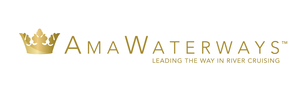While there are no towers on AmaReina, you'll feel like royalty in your very own floating castle. Luxurious comfort is afforded by the plush linens and soft robes within the staterooms, most of which feature view-enhancing twin balconies. A pleasing color palette with subtle floral and leaf designs brings you into the breathtaking scenery you'll see outside. Your palace features plenty of public spaces in which to mingle with your kingdom, like the fireside library. The Main Lounge, with its baby grand piano, is the epitome of class and a romantic venue in which to grab a drink. You'll also find fine dining fit for kings and queens in the Main Restaurant and at The Chef's Table, where a multi-course tasting menu will be presented to you. Additional regal amenities include a walking track, heated swimming pool, fitness room, massage and hair salon, and specialty coffee station.
Cruise ID: 53379
Explore Europe's amazing sights like the locals do. We were the first river cruise line to carry an entire fleet of complimentary bicycles on board, so you can experience biking alongside enchanting riverside pathways and in city centers. Whether you feel like joining one of our exclusive guided bike tours, or want to go discover on your own, there are many ways for you to explore on two wheels during your cruise. The beauty of Europe doesn't just lie in its architecture and landmarks – there are also breathtaking sights to be seen when you venture out into nature. That's why we've designed special guided hikes that will take you a bit off the beaten path, offering a unique perspective in beautiful destinations such as Austria's UNESCO-designated Wachau Valley. All of our guided hikes and bike tours are included in the cruise fare so you have more choices when it comes to how you prefer to explore.
EUROPE
7-Night Cruise
Ship's Crew: The entire amount will be divided equally amongst all crew members. Recommendation: 100 Euros per 7-night cruise, per guest. (AmaMagna 120 Euros per 7-night cruise, per guest)
Cruise Manager: Your Cruise Manager is not part of the ship's crew and is the AmaWaterways representative who also accompanies you on any pre- and/or post-cruise hotel/land extensions you may have booked. Recommendation: 25 Euros per 7-night, per guest; 4 Euros for each additional day, per guest for pre- and post-cruise hotel/land extensions.
10-Night Cruise
Ship's Crew: The entire amount will be divided equally amongst all crew members. Recommendation: 143 Euros per 10-night cruise, per guest.
Cruise Manager: Your Cruise Manager is not part of the ship's crew and is the AmaWaterways representative who also accompanies you on any pre- and/or post-cruise hotel/land extensions you may have booked. Recommendation: 36 Euros per 10-night, per guest; 4 Euros for each additional day, per guest for pre- and post-cruise hotel/land extensions.
11-Night Cruise
Ship's Crew: The entire amount will be divided equally amongst all crew members. Recommendation: 158 Euros per 11-night cruise, per guest.
Cruise Manager: Your Cruise Manager is not part of the ship's crew and is the AmaWaterways representative who also accompanies you on any pre- and/or post-cruise hotel/land extensions you may have booked. Recommendation: 40 Euros per 11-night, per guest; 4 Euros for each additional day, per guest for pre- and post-cruise hotel/land extensions.
14-Night Cruise
Ship's Crew: The entire amount will be divided equally amongst all crew members. Recommendation: 200 Euros per 14-night cruise, per guest.
Cruise Manager: Your Cruise Manager is not part of the ship's crew and is the AmaWaterways representative who also accompanies you on any pre- and/or post-cruise hotel/land extensions you may have booked. Recommendation: 50 Euros per 14-night, per guest; 4 Euros for each additional day, per guest for pre- and post-cruise hotel/land extensions.

















